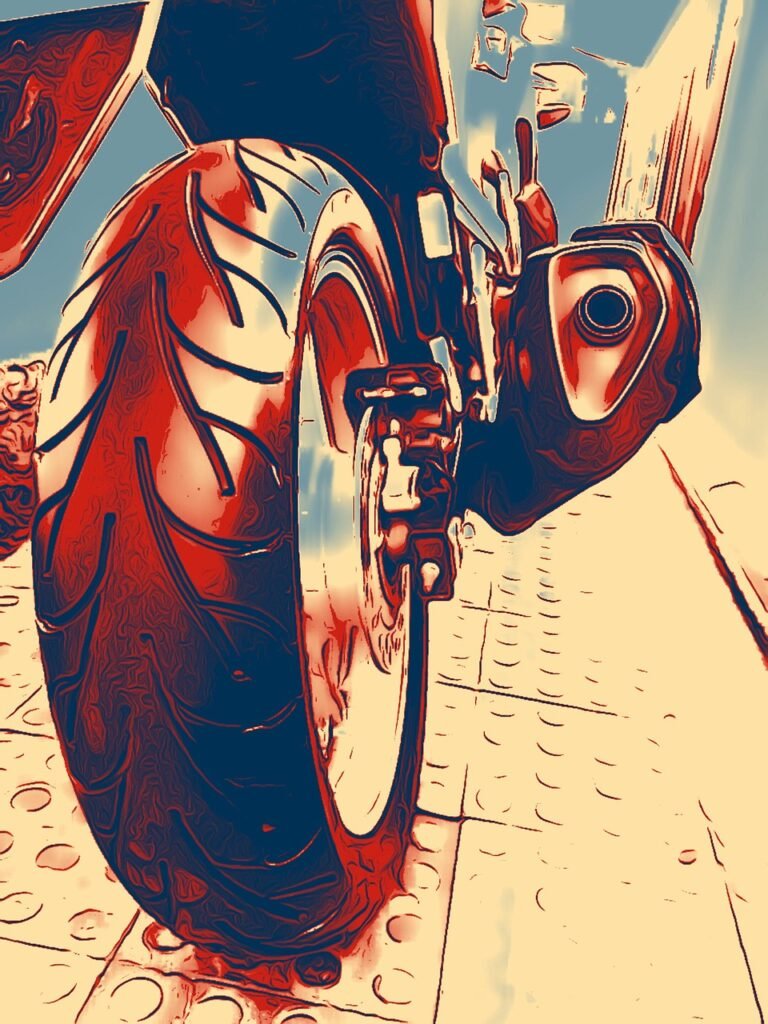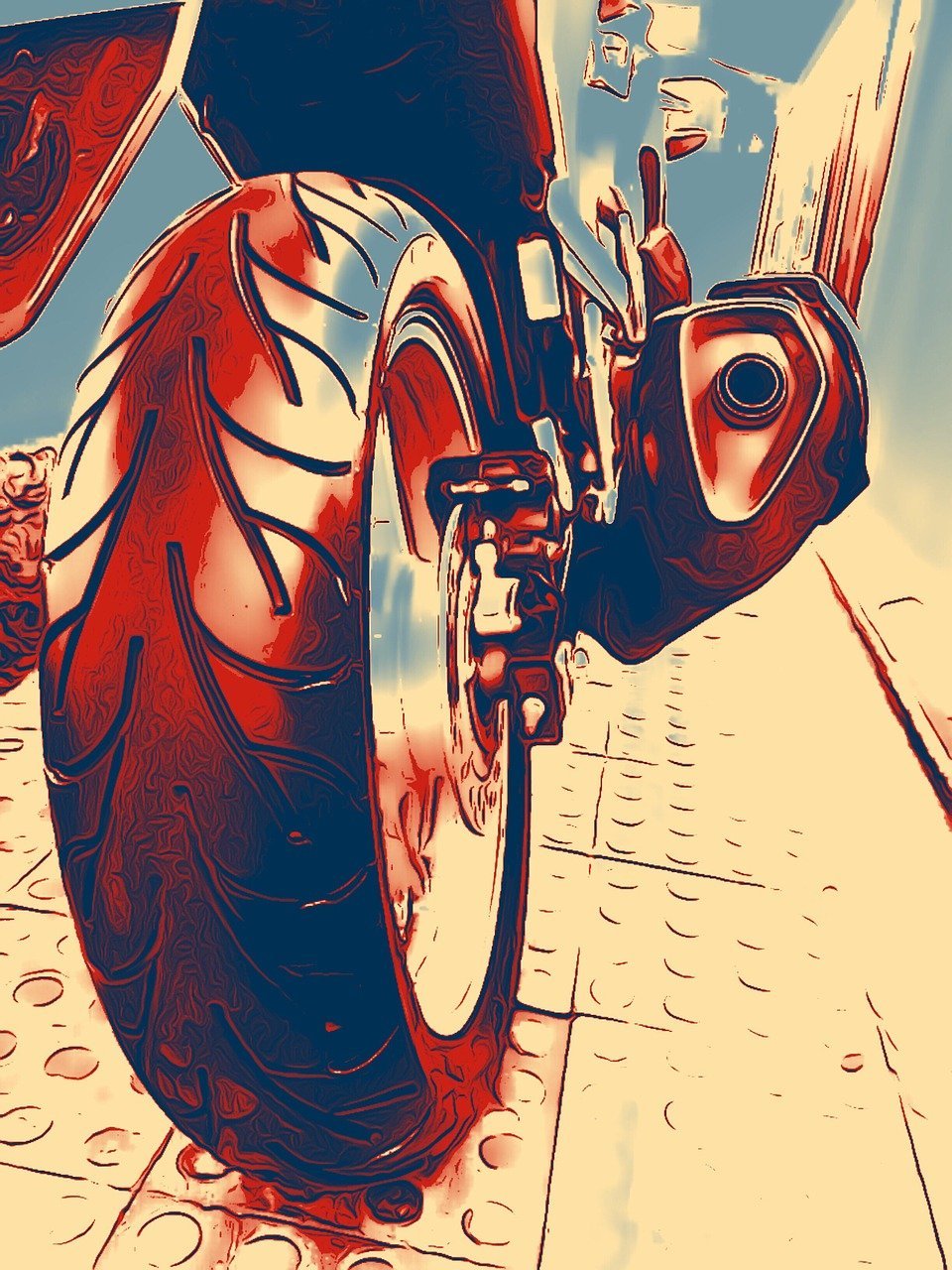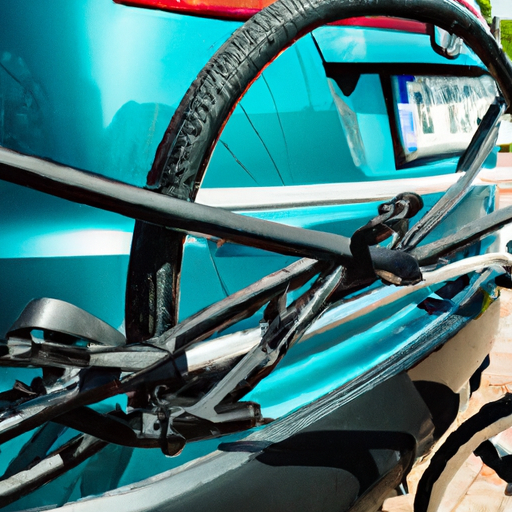How Do I Choose The Right Tire Tread For Different Riding Conditions?
Imagine cruising down the open road, wind in your hair and a smile on your face. But wait, what’s that up ahead? A patch of gravel? Or maybe it’s raining cats and dogs? You quickly realize that not all roads are created equal, and neither are tire treads. Choosing the right tire tread for different riding conditions is essential for optimal performance and safety. But fear not, fellow adventurer, for we are here to guide you through the process, ensuring that you make an informed decision that will keep you riding smoothly in any situation.
Types of Tire Treads
When it comes to choosing the right tire tread for different riding conditions, it’s essential to understand the various types available. The three primary types of tire treads are knobby treads, slick treads, and semi-slick treads.
Knobby Treads
Knobby treads are characterized by their large, deep grooves and prominent knobs or lugs. These treads are primarily designed for off-road use and excel in providing excellent traction and grip on loose and uneven terrain. Knobby treads are commonly seen on mountain bikes, fat bikes, and motocross motorcycles.
Slick Treads
On the opposite end of the spectrum, slick treads feature a smooth, treadless surface. These treads are primarily designed for road riding and offer maximum contact with the pavement. Slick treads are commonly seen on road bikes and provide low rolling resistance, allowing for faster speeds on smooth surfaces.
Semi-Slick Treads
As the name suggests, semi-slick treads bridge the gap between knobby and slick treads. They feature a combination of a smooth center section and slightly raised knobs on the sides. This design offers reduced rolling resistance on roads while still providing some traction and stability off-road. Semi-slick treads are often found on hybrid and gravel bikes, blending the best of both worlds for riders who frequently switch between road and off-road riding.
Considerations for Road Riding
When it comes to road riding, several factors should be taken into consideration when choosing the right tire tread.
Road Surface
The condition of the road surface vastly affects tire grip and traction. If you primarily ride on smooth, well-paved roads, slick treads are an excellent choice as they optimize contact with the road, allowing for higher speeds and efficient performance. However, if your route includes rough or uneven roads, consider opting for semi-slick or knobby treads, as they offer better stability and grip on less than ideal surfaces.
Weather Conditions
Weather conditions also play a significant role in tire performance on the road. Wet roads, for example, can significantly reduce traction and increase the likelihood of skidding or hydroplaning. In such conditions, choosing tires with grooves or textured patterns, like semi-slick or even knobby treads, can greatly improve grip and minimize the risk of accidents. On the other hand, dry road conditions allow for slick treads to shine, as they offer optimal contact with the surface, maximizing speed and efficiency.
Puncture Resistance
Another consideration for road riding is puncture resistance. Road debris such as glass, sharp rocks, or nails can pose a significant threat to your tires. Choosing tires with thicker and more durable tread materials, along with features such as puncture-resistant belts, can greatly reduce the risk of punctures and flats, keeping you on the road and avoiding unnecessary delays and expenses.

Considerations for Off-Road Riding
For riders who venture off the beaten path, a different set of considerations come into play when choosing the right tire tread.
Terrain Type
The type of terrain you’ll be riding on is crucial in determining the appropriate tire tread. If you mainly ride on hard-packed dirt trails or gravel paths, semi-slick treads can provide the perfect balance between low rolling resistance and sufficient traction. However, if you tackle more technical terrains with loose dirt, mud, or rocks, knobby treads are the way to go. The deep grooves and significant lugs of knobby treads excel in gripping uneven surfaces and provide enhanced control and stability.
Weather Conditions
Similar to road riding, weather conditions are vital when it comes to off-road riding. Wet and muddy trails require tires with deeper grooves and wider spacing to prevent mud from clogging the tread and compromising traction. Knobby treads are designed to shed mud and offer exceptional grip in these conditions. Dry and hard-packed trails, on the other hand, usually favor semi-slick or even slick treads, as they provide reduced rolling resistance and allow for faster speeds.
Traction and Grip
Off-road riding often requires superior traction and grip to navigate challenging terrains safely. Knobby treads excel in providing the necessary traction, thanks to their larger surface area and more aggressive patterns. The raised knobs bite into loose surfaces, ensuring optimal control and minimizing the risk of sliding or skidding. However, for riders who frequently transition between off-road and on-road riding, semi-slick treads can be a versatile option, providing acceptable grip while still offering decent rolling performance.
Tire Tread Recommendations for Specific Riding Conditions
Now that we understand the different types of tire treads and considerations for both road and off-road riding, let’s delve into specific tread recommendations for different riding conditions.
Wet Roads
When riding on wet roads, safety is paramount. Look for tires with deeper grooves and treads designed to channel water away from the contact patch, reducing the risk of hydroplaning. Semi-slick or knobby treads with ample spacing between the knobs are ideal for these conditions, enhancing traction and preventing skidding.
Dry Roads
For dry roads, slick or semi-slick treads are the most suitable. These treads maximize contact with the road and provide low rolling resistance, allowing for higher speeds and efficient performance.
Mixed Conditions
If you often encounter mixed road and off-road conditions, such as gravel paths or packed dirt roads, consider opting for semi-slick or hybrid tires with a combination of smooth center sections and moderately raised knobs on the sides. These treads offer a balance between low rolling resistance on roads and sufficient traction on off-road surfaces.
Loose Gravel
When riding on loose gravel, off-road-specific knobby treads are highly recommended. The deep grooves and larger knobs effectively bite into the loose surface, providing stability and control. Avoid slick treads in these conditions, as they can result in skidding and loss of control.
Muddy Trails
To tackle muddy trails, knobby treads are essential. Look for tires with widely spaced knobs to prevent mud from clogging the tread. The aggressive patterns and deep grooves of knobby treads excel in shedding mud and provide the necessary traction to navigate these slippery conditions.

Factors Affecting Tire Tread Performance
While tire tread plays a crucial role in performance, several other factors can affect how your tires perform in different riding conditions.
Tire Pressure
Tire pressure is a critical factor that directly affects tire performance. The right tire pressure ensures optimal grip, rolling efficiency, and overall handling. Adjusting tire pressure based on the riding conditions can make a significant difference in how the tread interacts with the surface and can improve traction and control.
Tire Width
Tire width also impacts performance, particularly on off-road terrains. Wider tires generally offer better stability and traction, especially when paired with appropriate tread patterns. However, it’s important to consider frame clearance and personal riding preferences when choosing tire width.
Tire Material
The material used in manufacturing tires affects their durability, puncture resistance, and overall performance. Different tire materials have varying levels of grip and rolling resistance. Be sure to consider the type of rubber used in the tread, as well as any additional puncture-resistant features.
Rider’s Weight
The weight of the rider can influence tire performance and durability. Heavier riders may put more stress on the tires, leading to increased wear and reduced traction. It’s important to choose tires that are suitable for your weight and riding style to ensure optimal performance and durability.
How to Choose the Right Tread Pattern
Choosing the right tread pattern can be a challenging task, but considering a few key factors can help simplify the decision-making process.
Analyze Your Riding Style
Start by assessing your riding style. Are you primarily a road cyclist or an off-road enthusiast? Understanding your riding preferences will help determine the appropriate tread pattern for your needs.
Identify the Dominant Riding Surface
Consider the type of surface you ride on most often. If you mainly ride on roads or smooth surfaces, slick or semi-slick treads are typically the best choice. For off-road riders, think about the type of terrain you encounter most frequently to determine if knobby treads or semi-slick treads are more suitable.
Consider Weather and Climate
Factor in the weather and climate conditions in your area. If you often ride in wet or muddy conditions, tires with deeper grooves and better water dispersion are crucial for safety. In contrast, if you primarily ride in dry conditions, tires with minimal tread or slick treads are more appropriate.
Evaluate Traction and Durability
Lastly, consider your desired level of traction and durability. Knobby treads provide excellent traction in off-road conditions but may sacrifice some rolling efficiency on smooth surfaces. Slick or semi-slick treads, on the other hand, excel in rolling efficiency on roads but may lack the necessary grip for more challenging off-road terrains. Finding the right balance between traction and rolling efficiency is key.

Importance of Tire Maintenance
Choosing the right tire tread is just one part of the equation. Proper tire maintenance is crucial to ensure optimal performance and longevity.
Regular Inspections
Regularly inspecting your tires for any signs of wear, damage, or punctures is essential. Look for cuts, bulges, or uneven tread wear, as these can affect tire performance and safety. If any issues are detected, it’s important to address them promptly either through repairs or tire replacement.
Proper Inflation
Maintaining the correct tire pressure is vital. Under-inflated tires can reduce traction and increase the risk of pinch flats, while over-inflated tires can lead to a harsher ride and decreased handling. Refer to the tire manufacturer’s recommendations for the appropriate pressure range, and check your tire pressure regularly.
Rotation and Replacement
Rotating your tires periodically helps ensure even wear and extends their lifespan. Front and rear tires wear differently due to varying levels of weight distribution and braking forces. Additionally, knowing when to replace your tires is crucial for maintaining optimal performance and safety. Keep an eye on the tread depth indicators or consult with a professional bike shop for guidance.
Testing and Experimentation
While the guidelines outlined above provide valuable insights, it’s worth acknowledging that tire selection is subjective, and personal preferences may vary. Consider experimenting with different tread patterns and tire combinations to find what works best for you and your riding style.
Trying Different Tread Patterns
Don’t be afraid to try different tread patterns to get a feel for their performance. Renting or borrowing bikes from friends or local bike shops with different tires can help you determine which tread pattern suits your needs and preferences.
Seeking Expert Advice
If you’re uncertain about which tire tread to choose, seeking advice from local bike shops or experienced riders can be tremendously helpful. They can provide firsthand recommendations and insights based on their expertise and riding experience.
Common Misconceptions and Myths
There are several misconceptions and myths surrounding tire treads that it’s important to address.
Thin Tires Are Always Faster
While it’s true that thinner tires offer lower rolling resistance, this doesn’t necessarily mean they are always faster. Tire pressure, tread pattern, and overall tire design also play essential roles in determining speed. It’s essential to find the right balance between tire width, tread pattern, and rolling resistance for optimal performance.
Knobby Treads Work Best in All Off-Road Conditions
Knobby treads are known for their excellent traction on loose and uneven surfaces, but they may not be the best choice in all off-road conditions. Hard-packed trails and gravel paths often favor semi-slick or hybrid treads, offering decent grip while still maintaining rolling efficiency.
Slick Treads Are Unsafe
While it may seem counterintuitive, slick treads are not inherently unsafe. Slick tires are specifically designed for road riding and, when used in appropriate conditions, offer excellent grip and control on smooth surfaces. However, it’s important to be mindful of wet or slippery road conditions, as slick treads may have limited traction in these scenarios.
Conclusion
When it comes to choosing the right tire tread for different riding conditions, it’s crucial to consider factors such as road surfaces, weather conditions, terrain types, and desired performance characteristics. By analyzing your riding style and preferences, identifying the dominant riding surface, and evaluating factors like weather and traction, you can make an informed decision about the ideal tire tread for your needs. Regular tire maintenance and periodic experimentation can further enhance your riding experience and help you find the perfect balance between performance and safety. So go ahead, choose the right tire tread, and enjoy your rides to the fullest!


